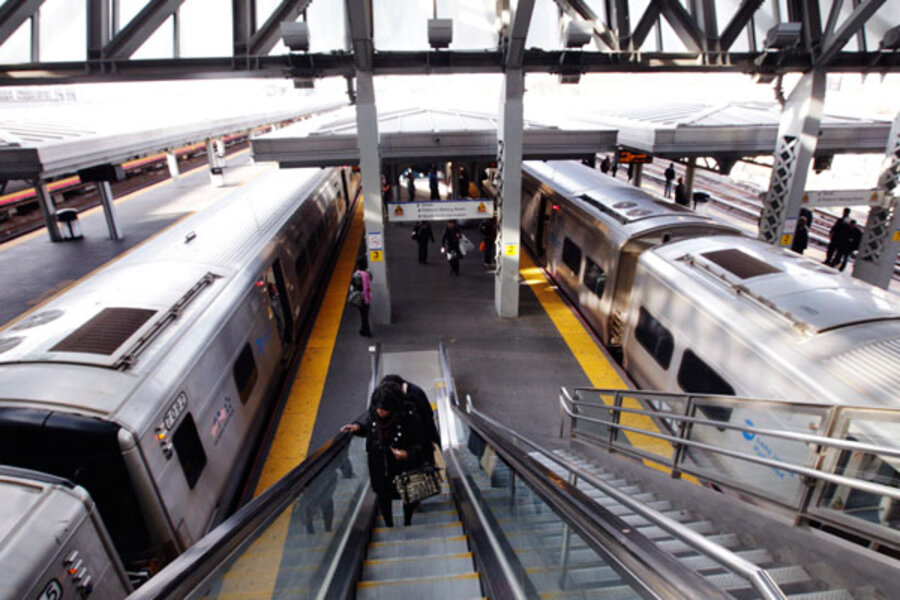America's busiest commuter railroad on the verge of strike
Loading...
| New York
Workers for the busiest commuter railroad in the United States are threatening to go on strike later this month as union leaders and New York state officials go down to the wire after four years of wrangling over a new contract.
As a July 20 strike deadline looms, negotiations have spiraled into a virtual soap opera of election-year political gamesmanship. Byzantine state and federal labor laws are involved, and 300,000 weekday commuters from Long Island could be affected.
At issue is the fact that more than 5,400 employees for Long Island Rail Road (LIRR) have been working without a contract since 2010. They are seeking a long-sought raise and trying to limit the amount that employees will have to contribute to their health care coverage.
The union and New York’s Metropolitan Transportation Authority, which oversees the LIRR as well as New York City’s subway and bus system, plan to return to the bargaining table Thursday. But after four years of stalled talks and federal mediation, tensions are running high.
Complicating matters is the federal Railway Labor Act of 1926. According to New York law, LIRR employees can't go on strike, since they are considered "essential." But the Railway Labor Act allows LIRR workers to go on strike on July 20, which will mark four years of negotiations.
As a result, both sides are having to triangulate between each other, the state, and Washington. Congress could force a “cooling off” period for negotiations to continue or require binding arbitration. It could also impose a settlement.
New York Governor Andrew Cuomo has said “Congress is pivotal to what happens here” and dispatched his hand-picked MTA chief, Thomas Prendergast, to Capitol Hill Wednesday, hoping the state's congressional delegation would step in to stop a strike.
But New York's members of Congress want nothing to do with the situation. “You didn't need to be a PhD in political science to know that the House of Representatives would never help New York out of a strike situation,” said Sen. Charles Schumer (D) of New York.
Governor Cuomo blamed the union for the congressional snub. Union coalition leader Anthony Simon responded by wondering why Mr. Prendergast traveled to Washington instead of the negotiating table.
Many observers sense a reprise of April's negotiations over the contracts of 34,000 MTA subway and bus workers. They, too, had been without a contract for more than two years and were at an impasse. Cuomo stepped in during Easter week to broker a deal – and receive most of the credit.
The MTA has offered LIRR a 17 percent raise over seven years; union officials insist that this happen over six. The union is also balking over the MTA’s plan to have existing employees contribute 2 percent of their salaries to their health insurance, with new hires contributing 4 percent. Workers currently contribute nothing to their health plans. Union officials are expected to make a counter offer Thursday.
Consistent with the 1926 federal law, President Obama has convened two “presidential emergency boards” to help resolve the dispute. Both 3-person panels issued nonbinding recommendations that sided with the workers.
As negotiations continue, the MTA has embarked on a “communications blitz,” running ads warning commuters of the possible strike and putting public pressure on the unions.
“We continue to hope that we can avoid a work stoppage at the bargaining table,” Prendergast said in a statement. “But nevertheless, we want LIRR customers and all Long Island residents to be aware that there is a potential for a disruption of service and what that might mean.”






